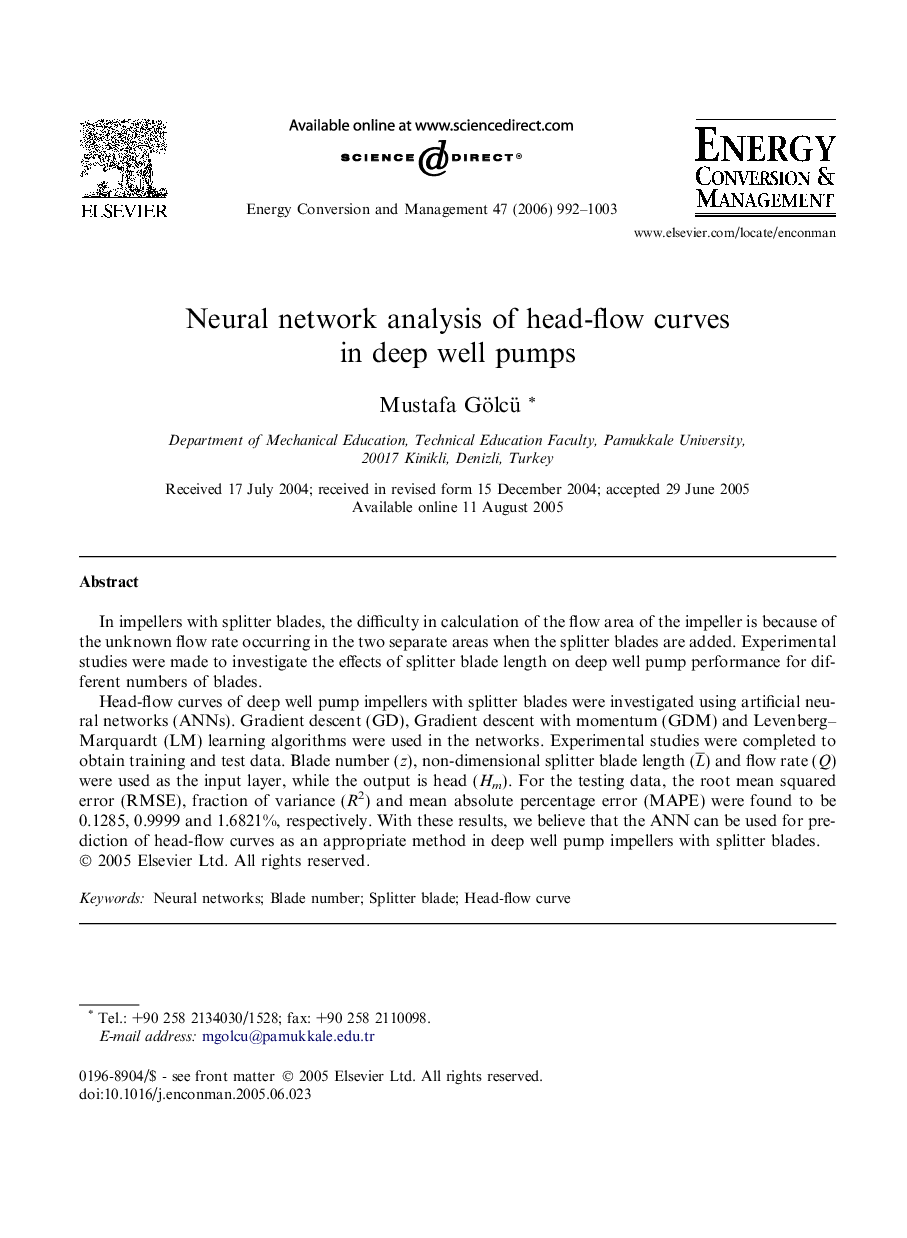| Article ID | Journal | Published Year | Pages | File Type |
|---|---|---|---|---|
| 762422 | Energy Conversion and Management | 2006 | 12 Pages |
In impellers with splitter blades, the difficulty in calculation of the flow area of the impeller is because of the unknown flow rate occurring in the two separate areas when the splitter blades are added. Experimental studies were made to investigate the effects of splitter blade length on deep well pump performance for different numbers of blades.Head-flow curves of deep well pump impellers with splitter blades were investigated using artificial neural networks (ANNs). Gradient descent (GD), Gradient descent with momentum (GDM) and Levenberg–Marquardt (LM) learning algorithms were used in the networks. Experimental studies were completed to obtain training and test data. Blade number (z ), non-dimensional splitter blade length (L¯) and flow rate (Q) were used as the input layer, while the output is head (Hm). For the testing data, the root mean squared error (RMSE), fraction of variance (R2) and mean absolute percentage error (MAPE) were found to be 0.1285, 0.9999 and 1.6821%, respectively. With these results, we believe that the ANN can be used for prediction of head-flow curves as an appropriate method in deep well pump impellers with splitter blades.
